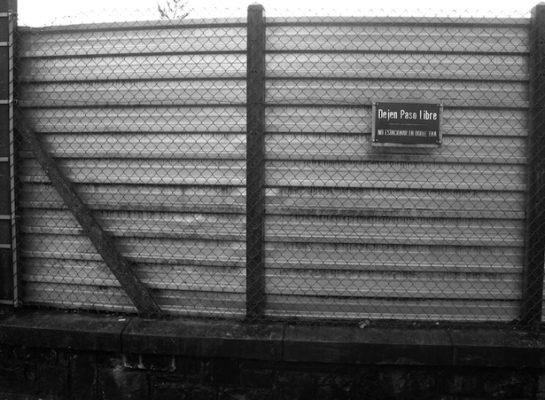Search
To search for an exact match, type the word or phrase you want in quotation marks.
A*DESK has been offering since 2002 contents about criticism and contemporary art. A*DESK has become consolidated thanks to all those who have believed in the project, all those who have followed us, debating, participating and collaborating. Many people have collaborated with A*DESK, and continue to do so. Their efforts, knowledge and belief in the project are what make it grow internationally. At A*DESK we have also generated work for over one hundred professionals in culture, from small collaborations with reviews and classes, to more prolonged and intense collaborations.
At A*DESK we believe in the need for free and universal access to culture and knowledge. We want to carry on being independent, remaining open to more ideas and opinions. If you believe in A*DESK, we need your backing to be able to continue. You can now participate in the project by supporting it. You can choose how much you want to contribute to the project.
You can decide how much you want to bring to the project.

The problem isn’t the countries but their landscapes. Political, economic, social and environmental landscapes, that mark places with the imprint of their violence. A building, a house, a street and a factory, are places where things happen: landscapes that serve as the background for a story and tell us things, though occasionally they pass unnoticed.
Los países (The countries) is the work that the artist Pedro G. Romero has presented (until 16 June) at the galería Casa sin fin, in Madrid. It’s a project that began in 2008, within the framework of the research project Destrucción y construcción del territorio(Destruction and construction of the territory), at the Universidad Complutense in Madrid. In reality it is a prolongation of his large Archivo FX, a documentary archive (in construction) that he has been working on since the end of the nineties. Archivo FX is constituted as a collective archive on the Internet with thousands of images organised around thesauri, the titles of which are artistic styles, artists, movements and magazine titles of the modern vanguard. An anarchive where the artist places the images and art on trial and proposes the construction of different histories to reveal other realities. A work that is akin to that of Mnemosyne by Aby Warburg or the Passagen Work (Arcades Project), by Walter Benjamin, where the author self-imposed the ambitious task of delving deeper into the urban transformations of Paris.
The exhibition is made up of a series of black and white photographs of different landscapes, of the towns of Tolosa and Hernani in the Basque country. What the artist does is place the recuperation and restoration of old paper factories in Tolosa in relation to the environmental disaster of the current cellulose industry in Hernani, the same activity that according to the artist has been displaced. Pedro G. Romero photographs factories, entrances and transit zones, graffiti and industrial zones that talk of a landscape inscribed by environmental violence, a consequence of the current laxity on the part of the administrations regarding the creation of efficient policies for territorial and ecological issues.
Each one of the photographs is accompanied by literary texts written by the artist: fragments of conversations, random ideas or written notes in a direct, accessible language, but one charged with connotations, sometimes political, at others artistic and sometimes even gastronomic. They are fictions that the artist uses to bestow a different reading on the photographs that in some way or other reinforces the intrinsic violence of the images. In one of the texts, Pedro G. Romero talks about the film Tiefland, directed by Leni Riefenstahl, in which she took gypsies from the concentration camps so that they could work in the production as slaves, testifying to what Benjamin in his day proclaimed that “there is no cultural document that isn’t, at the same time, barbaric”. In another of the texts, he questions the limited political and social commitment of contemporary art, giving as an example the work of Santiago Sierra.
It’s not the first time that Pedro G. Romero presents his work in the format of an exhibition, he already did so with projects like Ciudad Vacía(Empty City), at the Fundació Antoni Tàpies in Barcelona in 2006 and Economía cero(Economy Zero), at the Museo Picasso in Barcelona in 2002, despite the difficulty of translating a work conceived for the web to the walls of an art gallery, where it appears fragmented and in an alien context. Hence why Los países culminates in a book coedited by the publishers Periférica, in which all the texts are shown along with the photographs.

Rosa Naharro endeavours to think about the present, considering its distinct contexts, through culture and contemporary art. Looking at exhibitions, writing, reading, film, music and even conversations with friends serve as her tools. Understanding and interpreting “something” of what we call the world becomes a self-obligation, as well as taking a certain stance, that doesn´t distance her from it. She combines writing for A*Desk with writing her doctoral thesis at the UCM and working with cultural management projects.
"A desk is a dangerous place from which to watch the world" (John Le Carré)